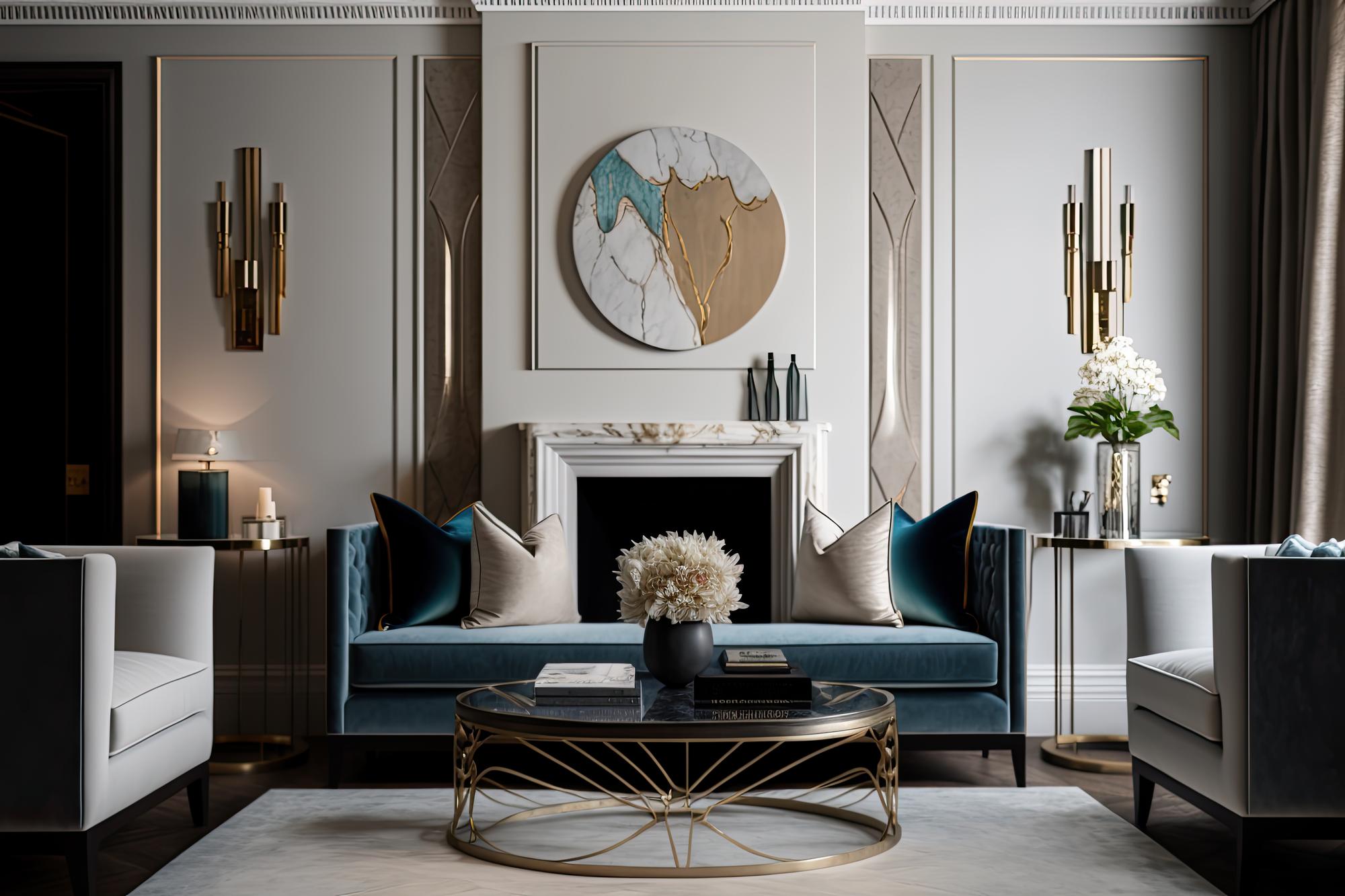British Contemporary Interior Design: A Jaw-Dropping Experience

Share
- Interior Design
- Interior Trends
- Italian Decor
- Italian Finishes
- Polished Plaster
- Property Developement
- Venetian Plaster
1. Classic Feel
Tradition is a key element, an essential part of the underlying concept, a core ingredient of British homes. Looking down on the legacy of architectural aesthetics in the United Kingdom is unfashionable, if not straightforwardly insolent. You ask any interior designer and they will tell you that in this country, decor starts with consideration for existing details: that the interior should reflect its surroundings – that context heavily defines good design.
Properties built in the Edwardian or Georgian era are always in demand because of their character. Beauty, symmetry, elegance – living rooms demonstrating palatial qualities, bespoke furniture reflecting the style and taste of an era long gone – but never forgotten.
In short, the classic feel that is such a definitive element of the natural British home experiences its roots in respect for the past – and that justifiably leaves its mark on most contemporary interior design projects as well.
We might instinctively prefer the glamour that’s been a trademark of high-end British decor for hundreds of years, but we live in an exciting age which evidences lifestyles radically different from those dominant in the 18th century. A perfect time for synthesis!
2. A global outlook
Media systems and appliances, 21st-century tech marvels – essential items of comfortable everyday living will not always fit into a classic setting for obvious reasons. One of the great achievements of contemporary British décor is that it has become capable of mixing the old with the new – it represents a smooth blending of tradition and modernism. A glimpse into the proven pedigree, with both feet in the present and ready to adapt to any challenges likely to rise in the foreseeable future. British décor has been and will remain open to embrace global trends – following tradition never deprived the industry of its rejuvenating potential.
When it comes to bespoke furniture, designers might opt for turning to, in general – British, and in particular, local craftsmen. Not so, when we are talking about concepts or the necessary raw materials, or even furniture accessories – there is nothing one would be unable to find on the British market. Especially in London, this has become a multi-cultural environment – there is room and demand for quality items arriving from all over the world.
3. Access to high-quality materials
Few will ever question a remark like the most prominent Italian cities are among the global capitals of fashion and design. And that goes just as well for décor – and it is not only the theory and best practice of the Italian masters – it is also the materials produced in the country and exported on a worldwide scale. High-end décor requires high-quality resources – inconsistent components will compromise perfection, no matter how thorough the conception was, or how much effort invested into creating an authentic design.
The days when a wall was simply an obstruction with holes (doors) in it, separating the rooms of the property, are long gone. The walls and ceiling are nowadays the centrepiece of the image of the room they enclose. They are also an indication of a unique lifestyle developed by the owner of the property. In a sense they are the initial, the surface layer of the very personality of a home. Italy is a source of paints and plasters of world-renowned quality.
4. A teeming market
A disputable vision of economic storm clouds threatens to spoil the positive mood of the British high-end property market. A series of stories has engulfed the mainstream news sites, listed some formidable global risks threatening the potential end of a lengthy boom. Another early warning sign that colder days might be ahead is that the soaring of property prices has stabilised. The inflow of new capital might slow considerably, but there’s a solid base of prospective clients still queueing for reputable addresses – especially in London and the South-East.
There’s also an eye-catching number of multi-millionaires claiming a permanent home within the UK – despite government efforts to restrict the oligarchies. Taking all factors into account, it is apparent that no one should be afraid of catching a nasty cold in the advancing ‘chill’. There’s a solid demand for the services of the industry and it will not disappear just because the tides of international money markets fluctuate.
5. A worthy pool of creative professionals
Italy might be the source, but Britain, especially London, is the place where the gifted congregate – such a strong demand and lucrative market has an irresistible appeal for so many established and upcoming décor talents. It really does not take a huge effort to find suppliers of the highest quality – no matter whether raw materials or experienced brain-power is concerned – within this coveted tradition. But the little bit extra – that special final touch – is really coming from the depths of their creative geniuses, strongly affected by values established in many cases by the traditions of faraway countries.
Taking all this into account, how could anyone debate that Britain, and especially London, is the place where things happen nowadays? If we are talking about setting up global standards of high-end property decor – of how to make the glamorous dreams and lifestyles of the wealthy come.
